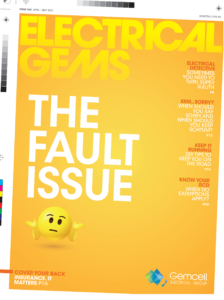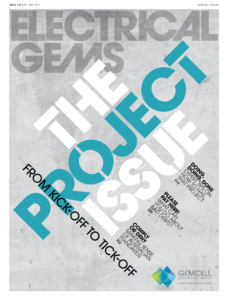The service pressure point
If you run an electrical business, you probably don’t have time to sit in an office combing through reviews – you’re busy on the tools, juggling call-outs, quotes, and team logistics.
Yet hidden in your customer feedback is a goldmine of insight into where your service shines, and where it slips up. The real challenge is finding the time to dig through it all. That’s where AI steps in.
In this article, we’ll explore how electricians can use AI to turn unstructured feedback from Google reviews (and even job notes) into action steps that boost your efficiency, reputation, and repeat business.
The pain point: why manual review fails
Let’s face it, most electricians don’t have time to trawl through pages of Google reviews. Manually reviewing feedback is not only time-consuming, but also subjective – and while a single negative comment might not mean much on its own, a pattern of ‘poor communication’ or ‘unclear pricing’, can signal a deeper issue.
This is where artificial intelligence is a game-changer. With just a few simple steps, AI can process hundreds of reviews and reveal which problems are most common and which changes will have the biggest impact on customer satisfaction.
“As electricians increasingly rely on digital tools for scheduling, quoting and customer communication, AI can play a powerful role in analysing customer feedback to improve service quality,” says Tristan Foster, Co-founder and Principal Consultant at Grand West Consulting. “By reviewing feedback, call transcripts and job notes, AI can identify recurring issues such as response times or workmanship concerns, and surface actionable insights.”
The AI solution: simple tools for deep analysis
AI isn’t just for big corporations or data labs, it’s now accessible and surprisingly effective for small businesses, too. Tools like ChatGPT or Google’s Gemini can quickly turn your stack of customer reviews into real, actionable insights. Here’s Tristan’s step-by-step guide on how to use AI tools:
1. Use general-purpose AI tools
“Start by copying and pasting batches of customer feedback such as Google reviews, survey responses, or support messages into a tool like ChatGPT. Then, use a specific prompt such as: “Summarise the top three positive and negative themes from these customer reviews, and identify any recurring suggestions for improvement. These are reviews for an electrical business.”
The clearer your context and question, the more relevant your results will be. Tristan suggests talking to AI like you would a junior team member. “If the AI misses the mark, tell it what it got wrong and ask it to refine the answer – it’s a conversation, not a command.”
2. Understand sentiment analysis
AI can gauge the tone of your reviews, whether customers sound delighted, frustrated, or indifferent. “This is called ‘sentiment analysis’,” Tristan says, “and it helps you see not just what people are saying, but how they feel about it. This is especially good for spotting broad trends – although sarcasm, slang, or technical jargon can still trip AI up – so always review the results before acting on them.”
3. Identify patterns and trends
AI tools excel at grouping feedback into clear themes, a process called topic clustering or modelling. For example, it might reveal that ‘late arrival’ is mentioned 45 times, while ‘unclear quotes’ appears 20 times. This gives you a quick picture of where to focus your attention and which issues have the biggest impact.
As Tristan explains, “AI helps you see the ‘why’ behind customer satisfaction or frustration. Once you know what’s driving the feedback, the next step is simple: act on it.”
Translating data into systemic change
Insight is only powerful if it leads to change, so once you’ve identified the recurring themes in your customer feedback, the next step is to take action.
The actionable plan:
- Start with one or two high-impact issues: rather than trying to fix everything at once, identify the issues that are easily solved but will have a big impact. For example, if AI analysis reveals that ‘poor communication on arrival time’ is the most common complaint, the solution isn’t another team pep talk, it’s a process shift.
- Implement a new standard operating procedure (SOP): set-up an automated SMS to send 30-minutes before arrival, confirming the technician’s name, estimated time, and contact number. For larger jobs, you might add a dedicated follow-up call or automatic notification if the technician is running late.
- Address insights with system-level actions: this can help reduce future errors, build customer trust, and make service quality consistent across your team. The goal isn’t just to fix problems, it’s to remove them from the process altogether.
The competitive edge of true listening
By embracing this AI-driven approach, contractors shift from being reactive service providers to proactive business managers. Instead of waiting for problems to surface, they can spot patterns early, refine their processes, and strengthen relationships with every job.
In the end, AI isn’t about replacing people but about giving you sharper tools to run your business in smarter ways. Electricians who learn to combine great service with great systems will be the ones leading the pack in the years ahead.
Subscribe to Electrical Gems
Featuring topical issues in the industry, product reviews and emerging trends in local markets.















































































